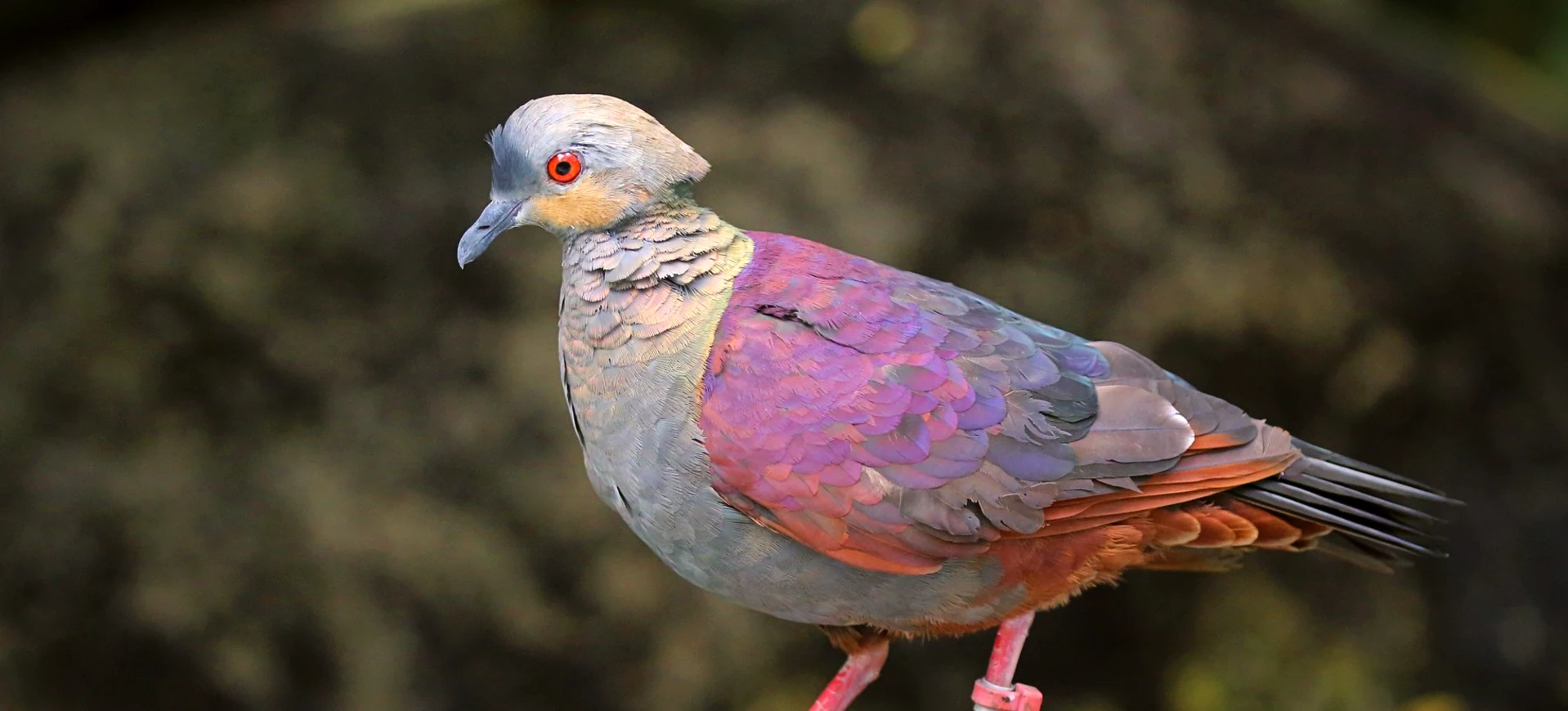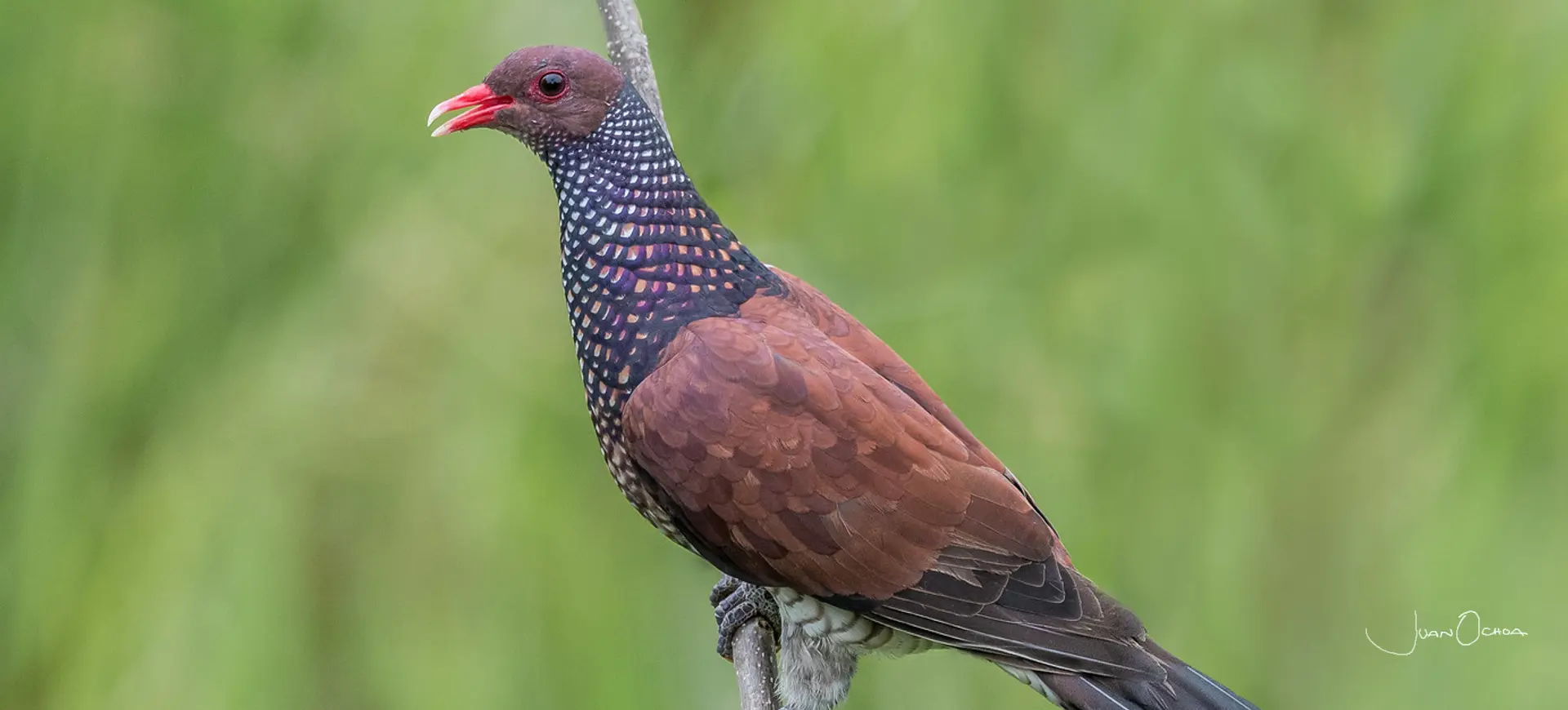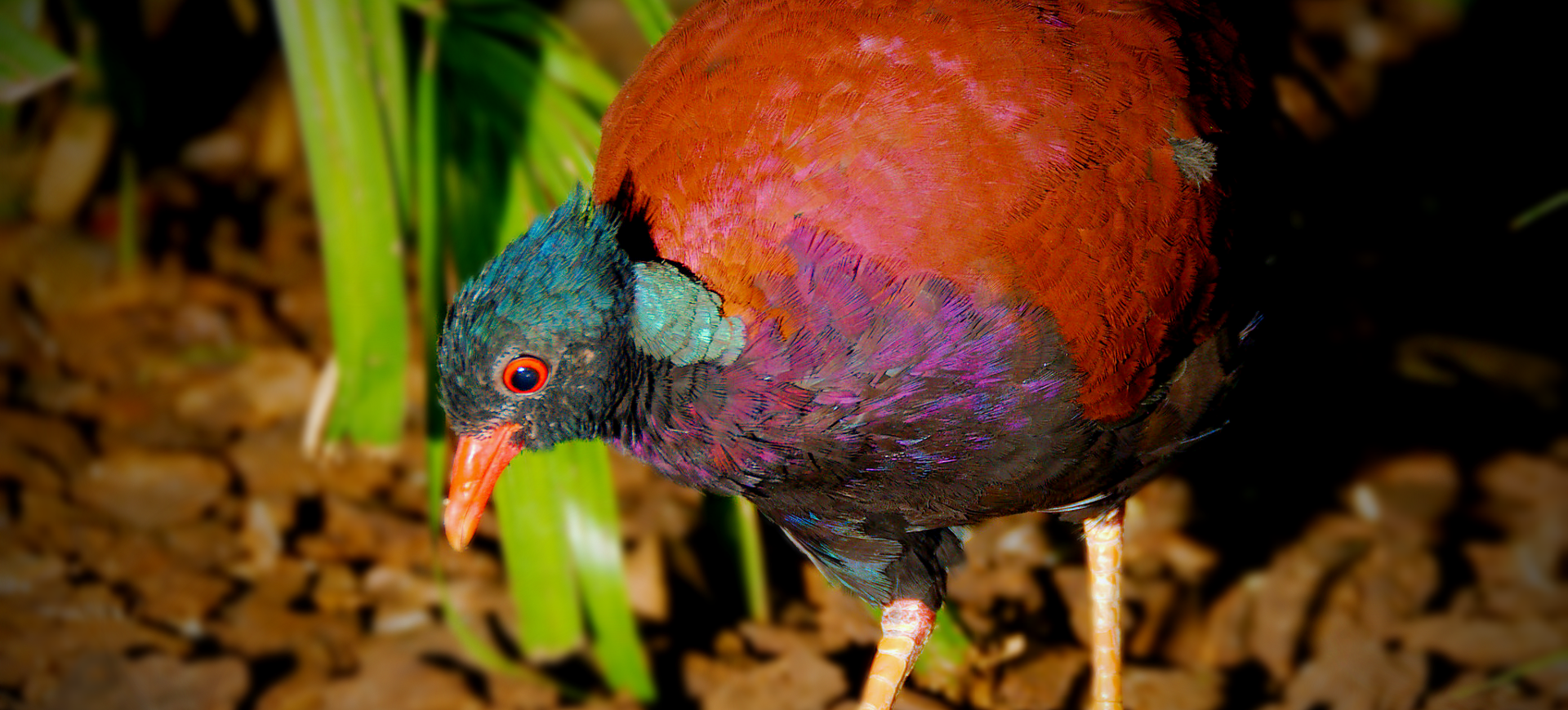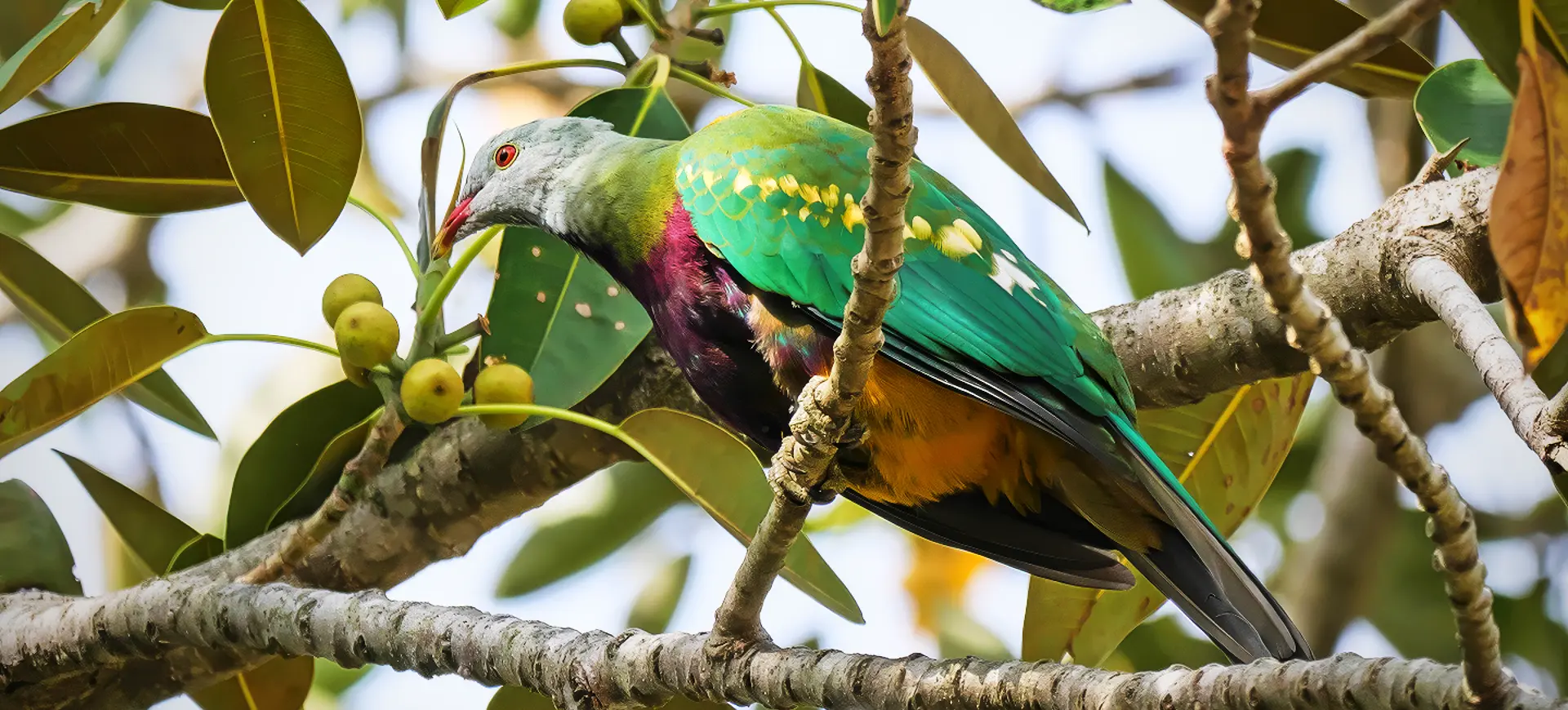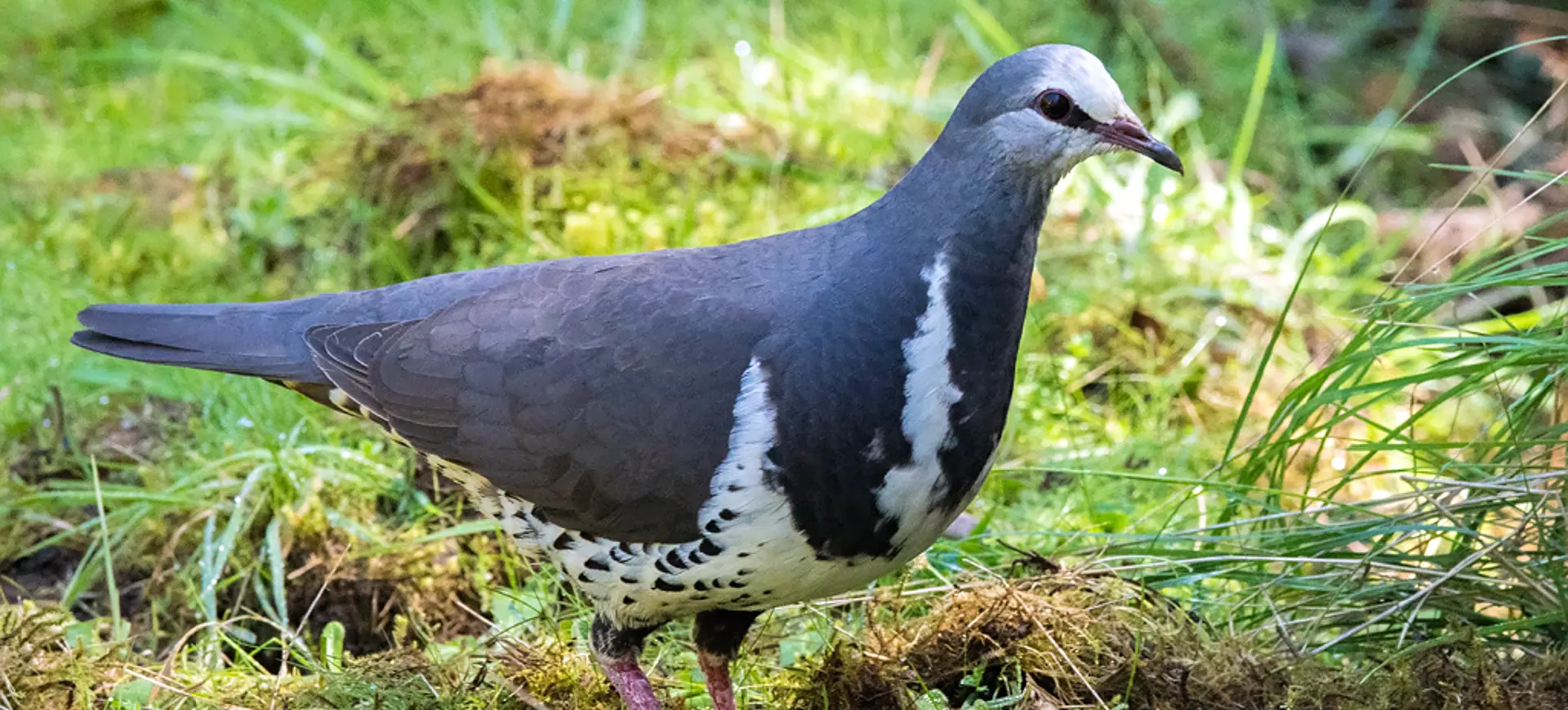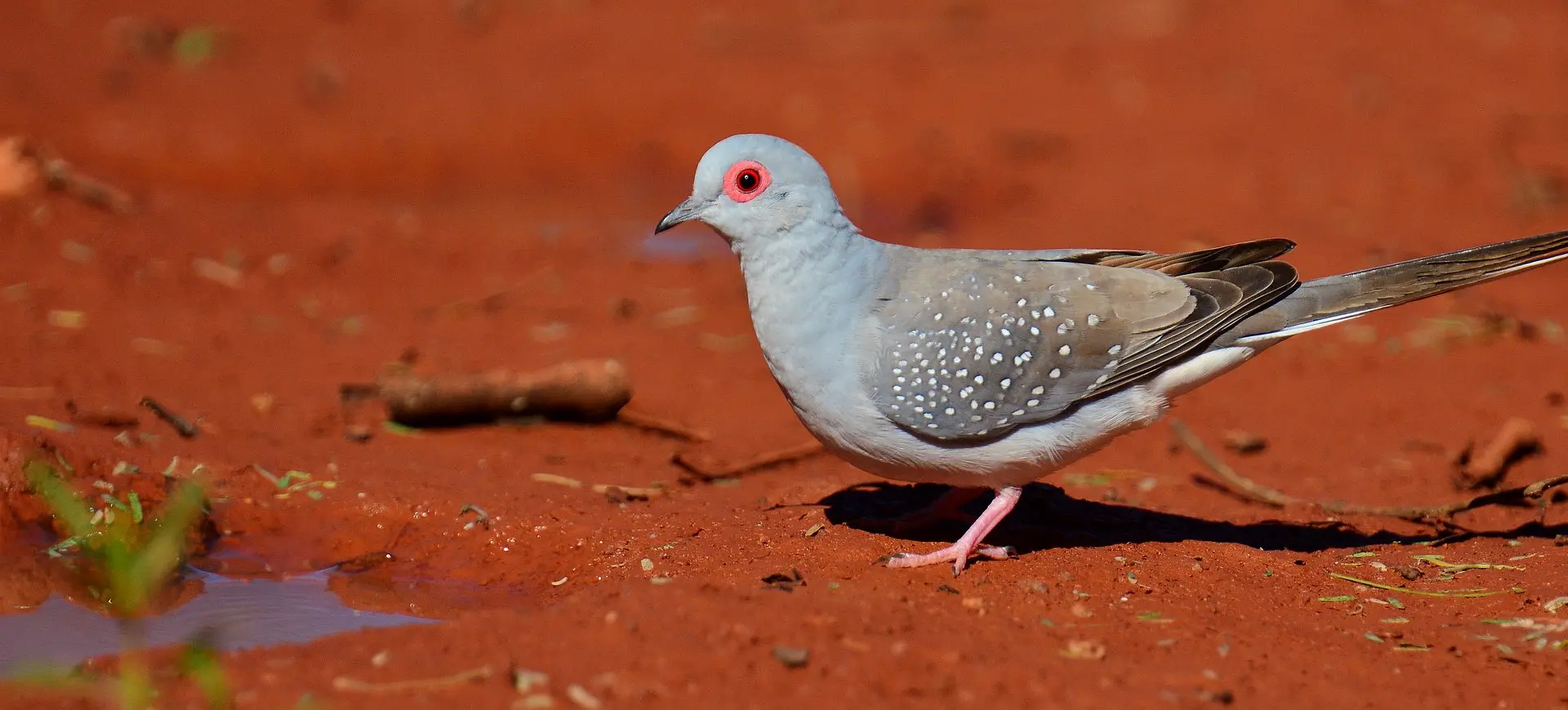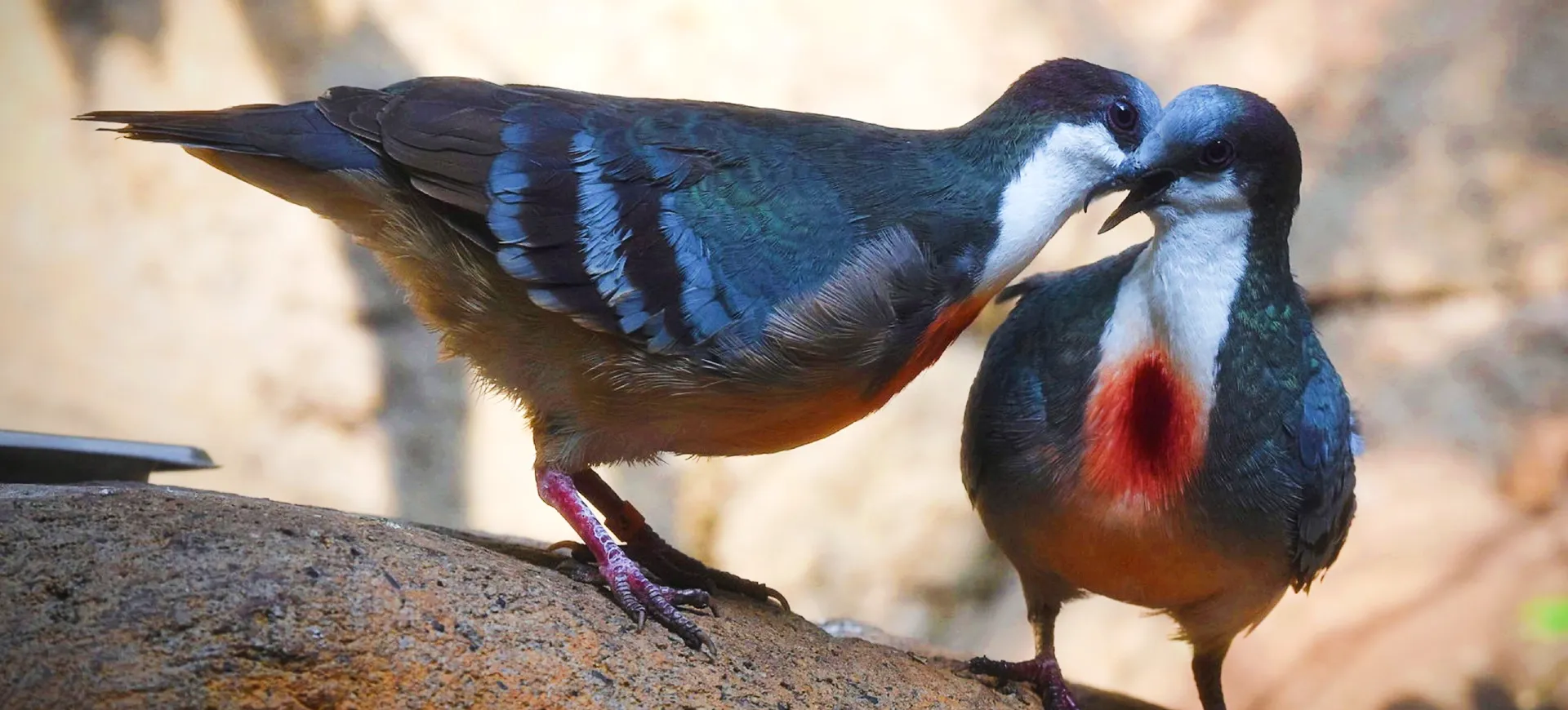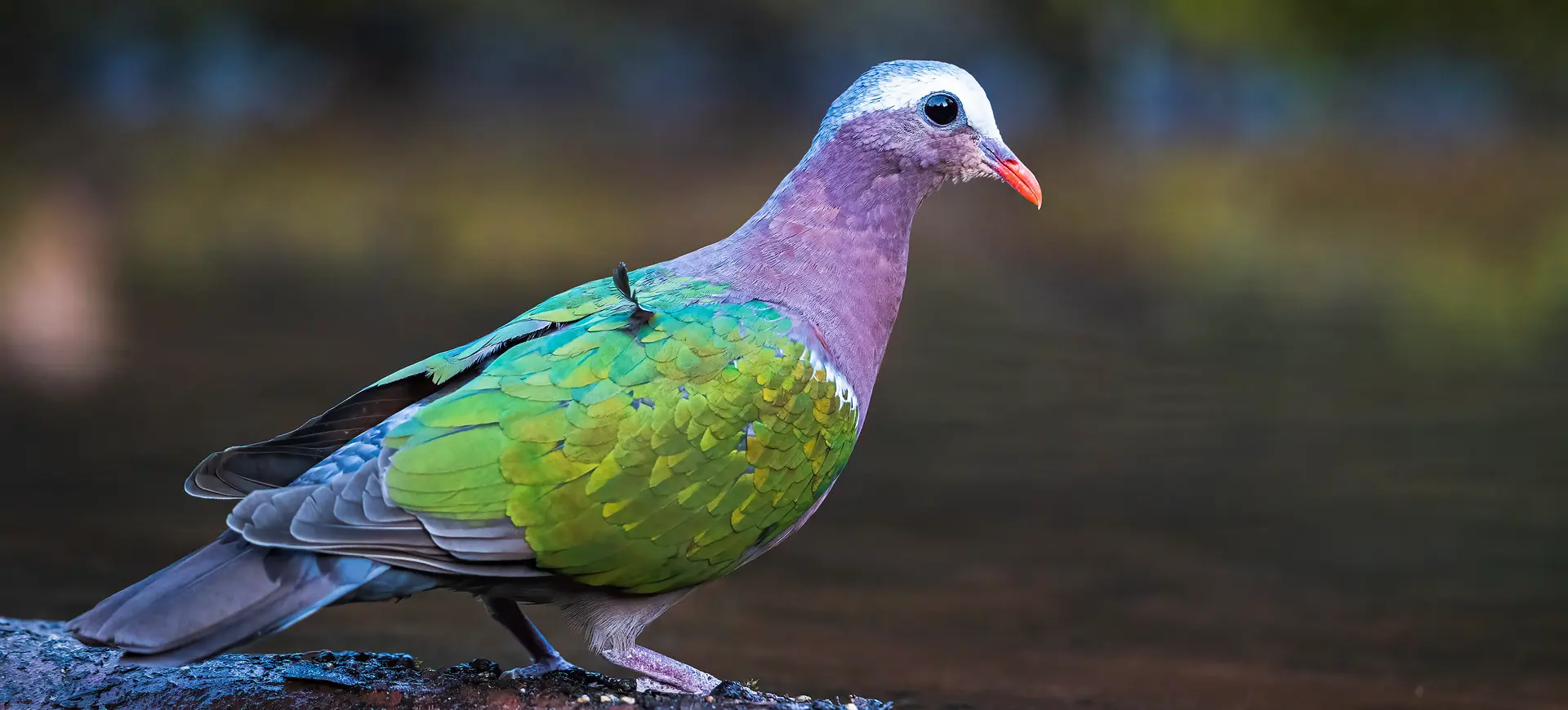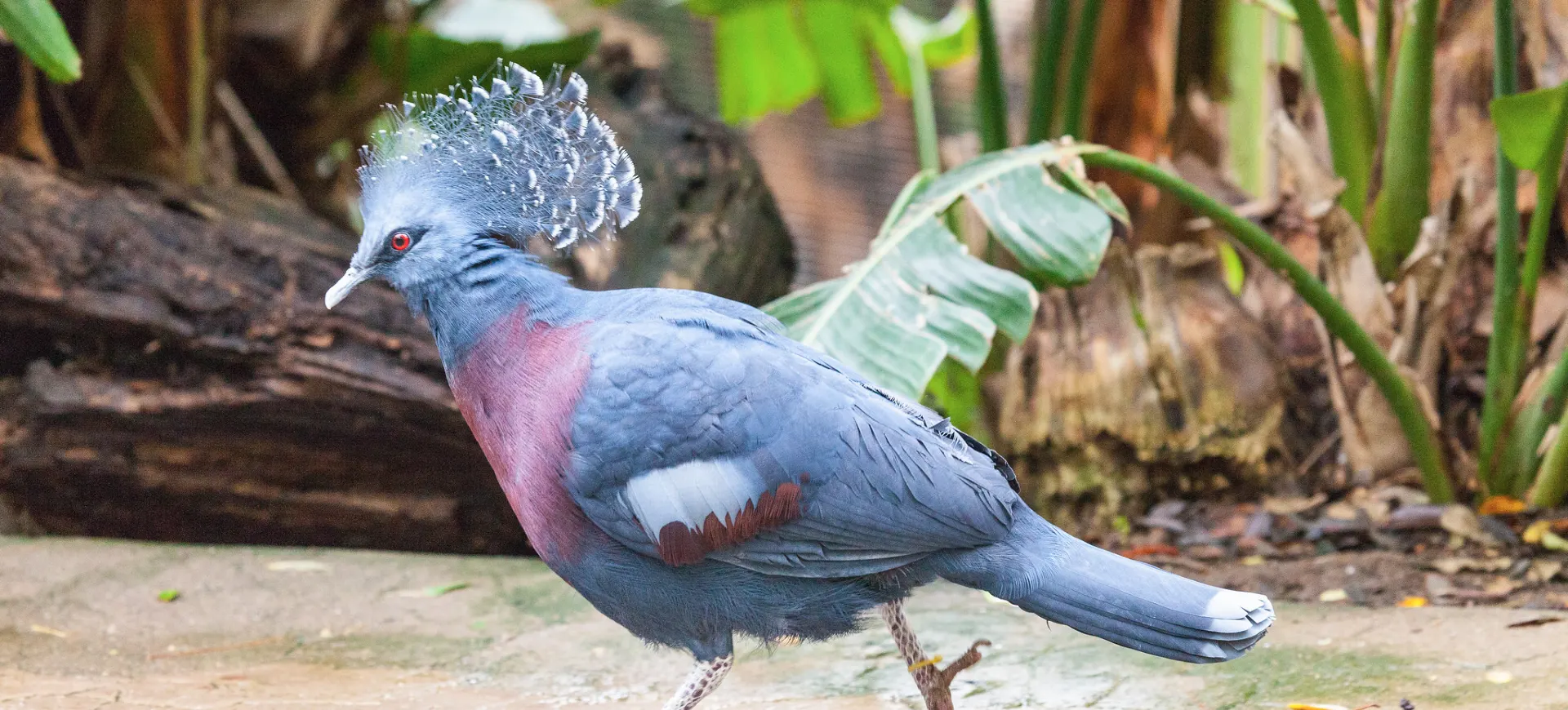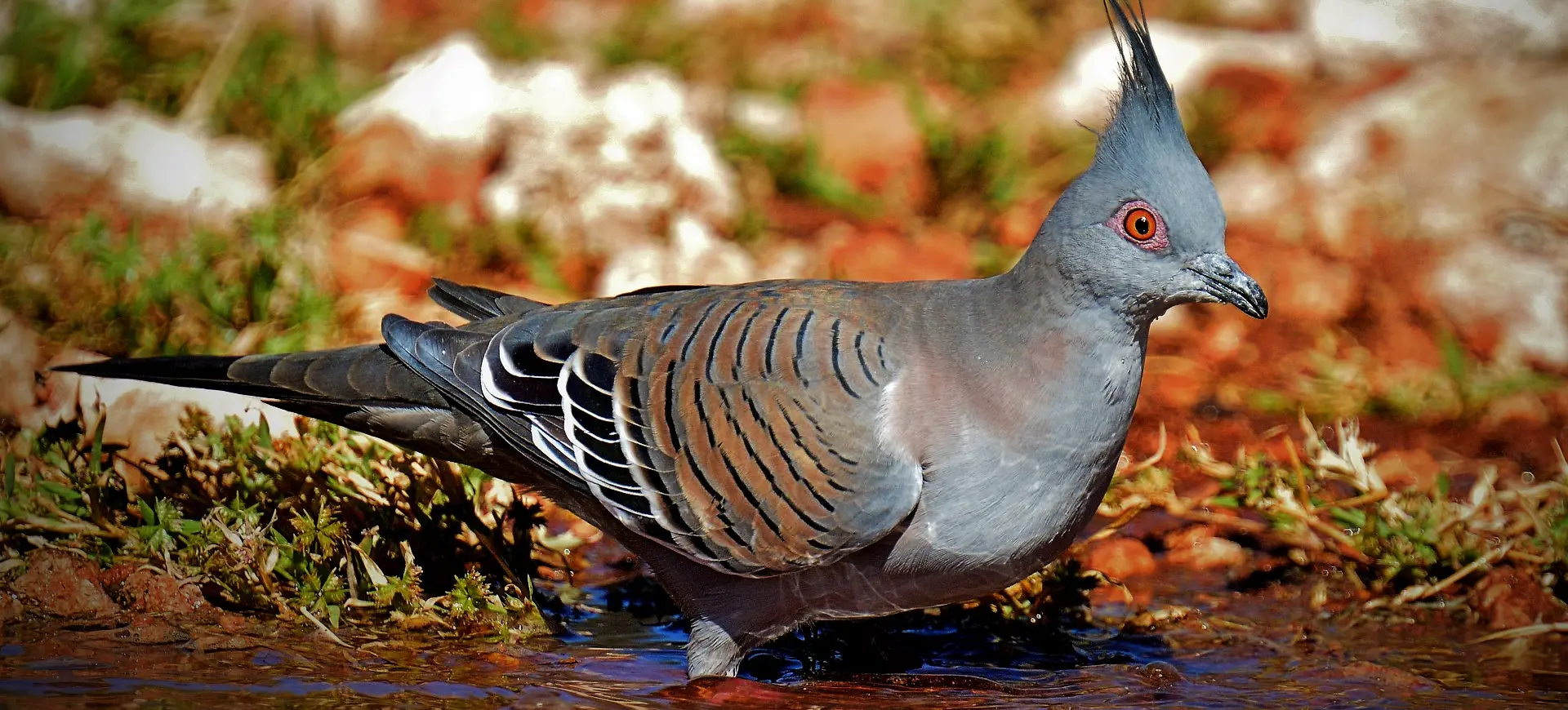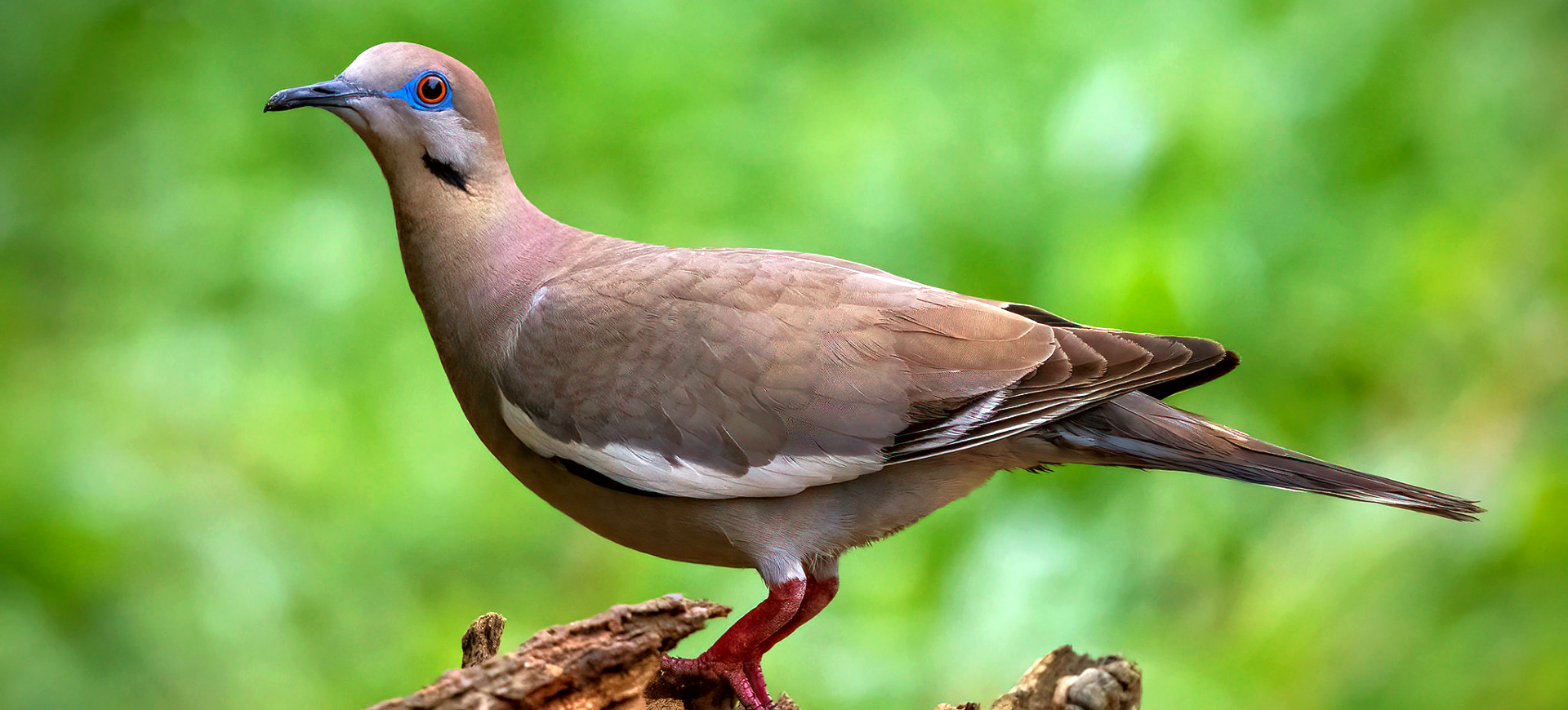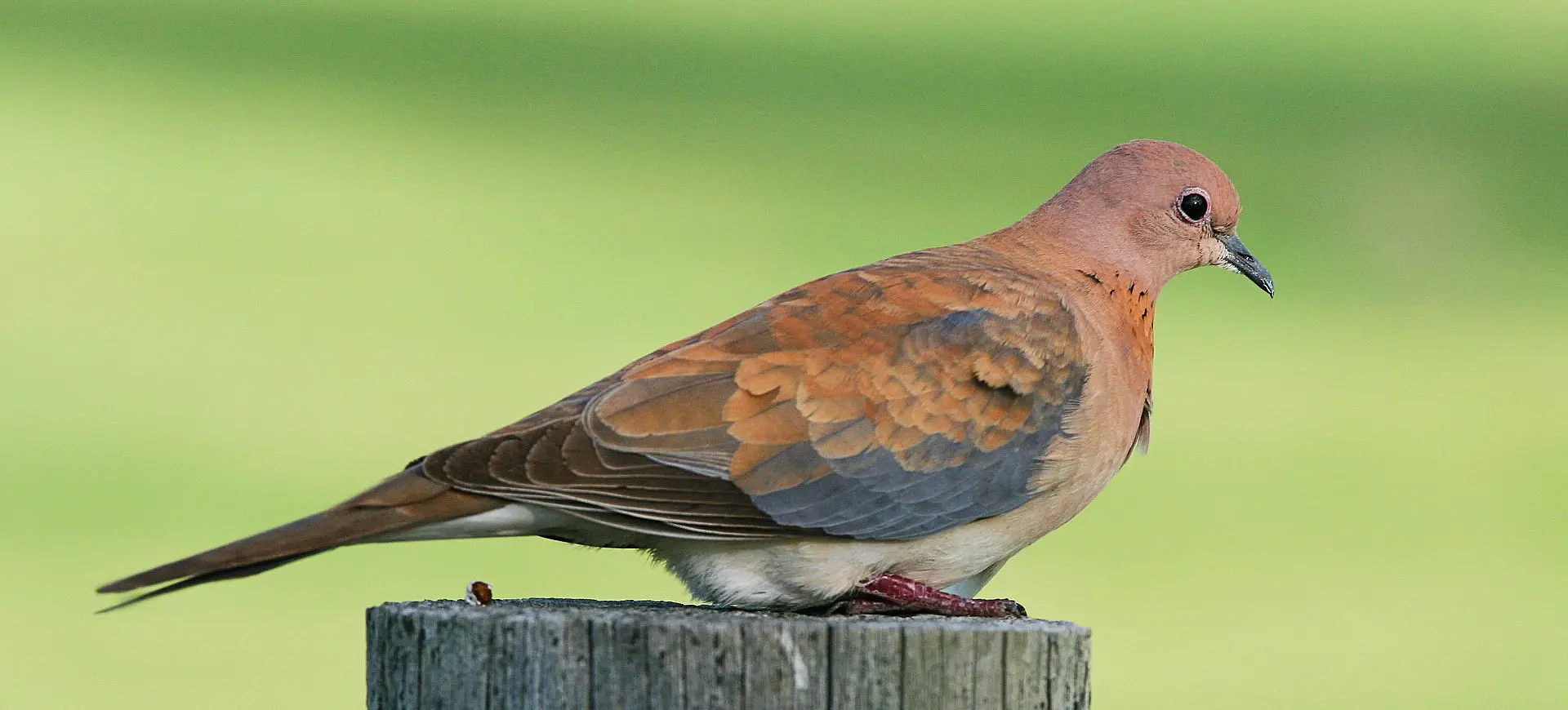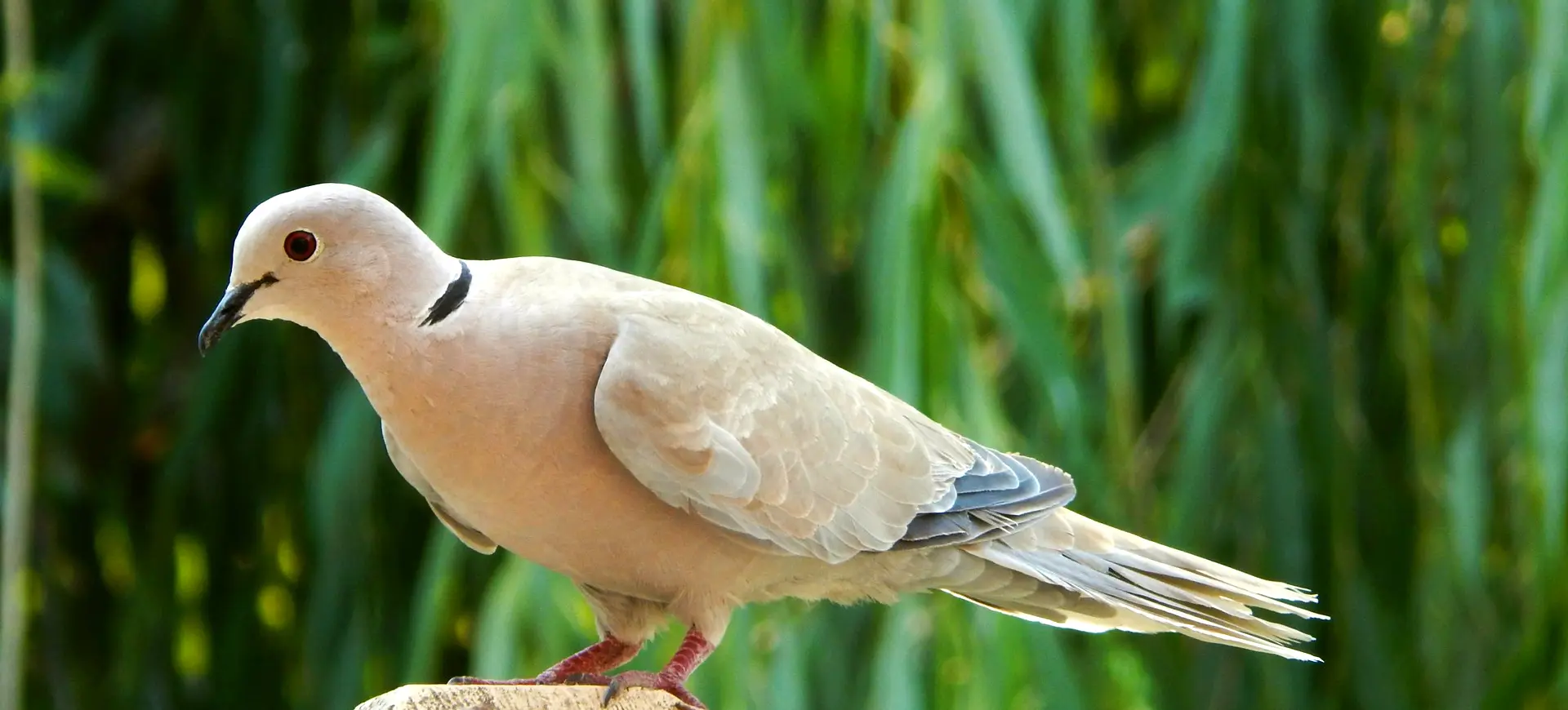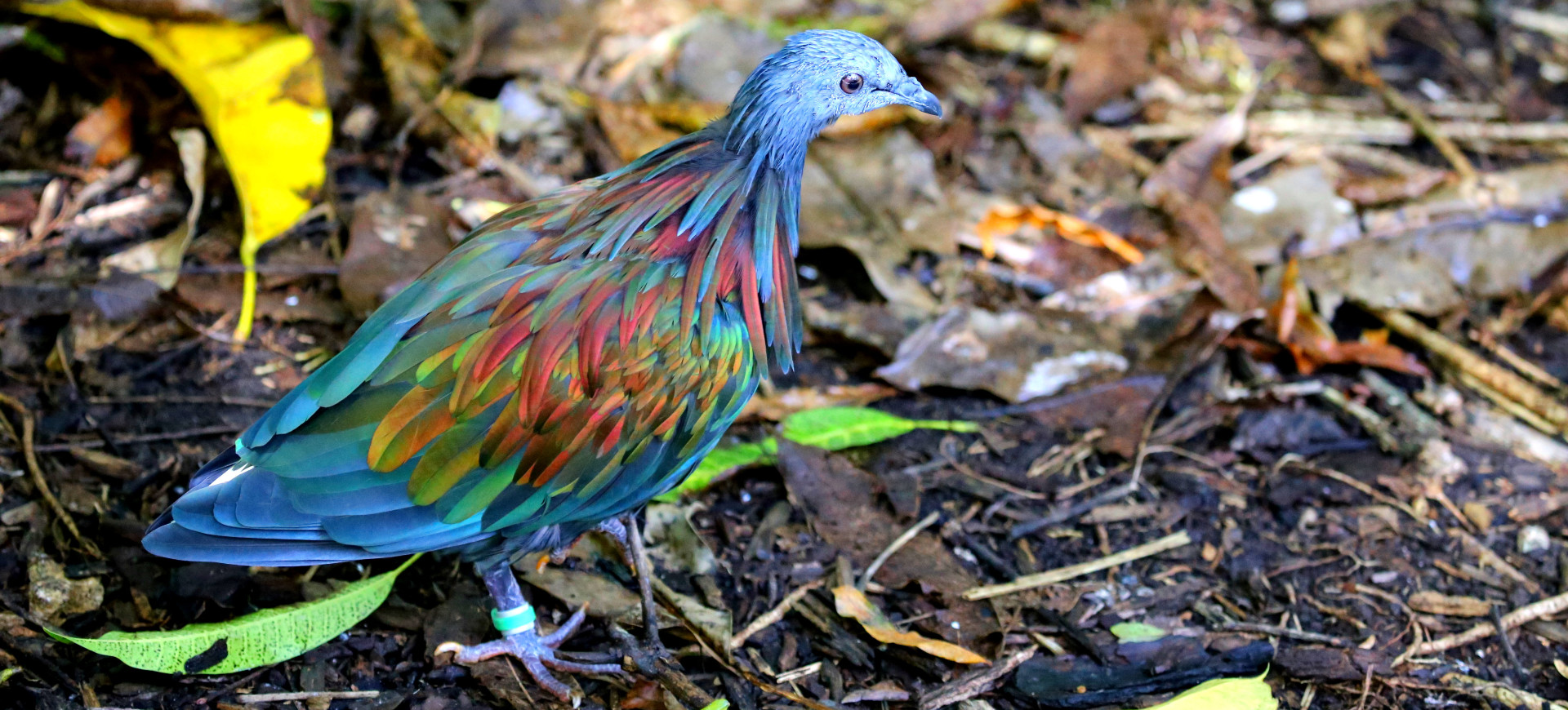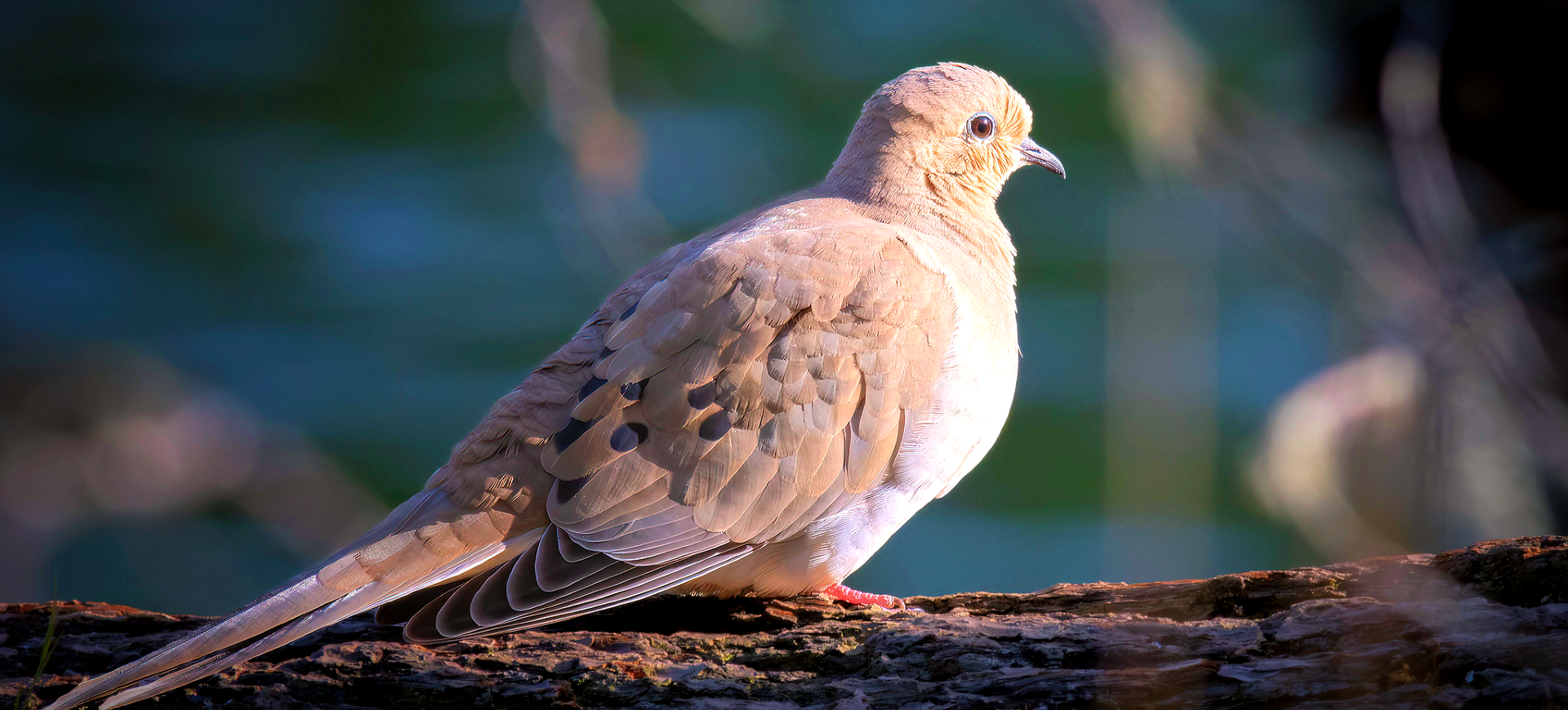Overview
The Pink-necked Green Pigeon is a vibrant, medium-sized bird native to Southeast Asia. It is known for its striking plumage, which features a blend of green, pink, and orange hues. The males are particularly colorful, with a pink neck and breast, green wings, and an orange belly. The females are less colorful but still possess a greenish hue that helps them blend into their surroundings.
This species is primarily frugivorous, feeding on various fruits and berries. They are highly adaptable and can be found in various habitats, from forests to gardens and even urban areas. The Pink-necked Green Pigeon is a social bird, often seen in flocks, especially when feeding or roosting. They are known for their musical calls, which are often heard during the early morning and late afternoon.
The Pink-necked Green Pigeon is not considered a threatened species, although it is susceptible to habitat loss due to deforestation and urbanization. Conservation efforts are focused on habitat preservation and the establishment of protected areas to ensure the long-term survival of the species.
Taxonomy
Kingdom
Phylum
Class
Order
Family
Genus
Species
Type
Physical Description:
The Pink-necked Green Pigeon is a medium-sized bird with a distinctive coloration. Males are particularly striking, featuring a vivid combination of pink, green, and yellow. The pink neck and breast contrast sharply with the green wings and yellow belly, making the males easily identifiable.
Females are less colorful, with a more subdued green plumage that provides camouflage, especially during nesting. Adult Pink-necked Green Pigeons typically weigh between 150 and 200 grams and have a body length of approximately 24 to 28 centimeters. They do not have a significant wingspan, as they are primarily arboreal and do not engage in long flights.

Lifespan: Wild: ~8 years || Captivity: ~10 years

Weight: Male: 5.6–6.3 oz (160–180 g) || Female: 5.3–6 oz (150–170 g)

Length: Male: 9.8–10.6 inches (25–27 cm) || Female: 9.4–10.2 inches (24–26 cm)

Wingspan: Male & Female: 16–18 inches (41–46 cm)

Top Speed: 30 mph (48 km/h)
Characteristic:
Native Habitat:
The Pink-necked Green Pigeon is native to Southeast Asia in countries like Indonesia, Malaysia, the Philippines, and Thailand. They inhabit various environments, including forests, mangroves, and urban parks. These habitats provide abundant fruiting trees, which are crucial for their diet.
They prefer dense vegetation, protection from predators and suitable nesting sites. Despite their adaptability, they are susceptible to habitat loss due to deforestation and land conversion for agriculture. However, they are also known to thrive in human-altered landscapes, including urban parks and gardens.
Climate Zones:
Biomes:
WWF Biomes:
Biogeographical Realms:
Continents:
Diet:
Diet & Feeding Habits:
The Pink-necked Green Pigeon is primarily frugivorous, feeding on various fruits, including figs and berries. They are essential seed dispersers in their native habitats, contributing to the health and diversity of the ecosystems they inhabit. They forage both in trees and on the ground, depending on the availability of food.
They are known to feed in flocks, especially when food is abundant. This social feeding behavior allows them to cover more ground and access various food sources. They also consume small insects and nectar, although fruits comprise most of their diet.
Mating Behavior:
Mating Description:
The Pink-necked Green Pigeon forms monogamous pairs during the breeding season. The male performs elaborate courtship displays, including puffing up its feathers and cooing, to attract a mate. Once a pair is formed, they build a nest together, usually in a tree, where the female lays one or two eggs.
Both parents and hatch incubate the eggs after about two weeks. The chicks are altricial, meaning they are born helpless and require significant parental care. Both parents take turns feeding the chicks and keeping them warm until they are ready to fledge, usually within three weeks after hatching.
Reproduction Season:
Birth Type:
Pregnancy Duration:
Female Name:
Male Name:
Baby Name:
Social Structure Description:
The Pink-necked Green Pigeon is generally social and often seen in flocks, especially when feeding. They are also known to form monogamous pairs during the breeding season. Despite their social nature, they are not particularly aggressive and tend to avoid conflicts with other bird species.
They communicate using a variety of vocalizations, including coos and whistles. These sounds are used for various purposes, including attracting mates, signaling danger, and maintaining social bonds within the flock. The species is also known for its elaborate courtship displays, which include puffing up its feathers and cooing.
Groups:
Conservation Status:
Population Trend:
The Pink-necked Green Pigeon is currently listed as “Least Concern” by the IUCN, with a stable population. The species is widespread across Southeast Asia and is adaptable to various environments, including human-altered landscapes. However, it faces challenges from habitat loss due to deforestation and hunting in some regions.
Conservation efforts for the Pink-necked Green Pigeon are primarily focused on habitat preservation. Protected areas and wildlife reserves play a significant role in conserving this species. Ongoing research aims to better understand the species’ needs and behaviors, which are essential for effective conservation strategies.
Population Threats:
The primary threats to the Pink-necked Green Pigeon are habitat loss and fragmentation due to deforestation and land conversion for agriculture. They are also hunted for sport and meat, although this is less common. Despite these challenges, the species is adaptable and can thrive in various environments, including human-altered landscapes.
Conservation efforts are focused on habitat preservation and reducing human impact. Protected areas like national parks and reserves are crucial for the species’ survival. Public awareness campaigns are also being used to educate local communities about the importance of conserving this colorful bird species.
Conservation Efforts:
Conservation efforts for the Pink-necked Green Pigeon are primarily focused on habitat preservation. Several national parks and reserves in Southeast Asia protect crucial habitats for this species. These protected areas are monitored to ensure the health and survival of Pink-necked Green Pigeon populations.
Ongoing research is being conducted to better understand the needs and behaviors of this species. This research is crucial for implementing effective conservation strategies, including habitat restoration and anti-poaching measures. Public awareness campaigns are also being used to educate local communities about conserving this unique species.
Additional Resources:
Fun Facts
- The Pink-necked Green Pigeon is a strong flier, capable of reaching speeds up to 30 mph.
- Males display vivid colors, including pink, green, and yellow.
- They are essential seed dispersers in their native habitats.
- The species is listed as “Least Concern” by the IUCN.
- They have a monogamous mating system.
- Pink-necked Green Pigeons are primarily frugivorous.
- They are capable of adapting to human-altered landscapes.
- The species is native to Southeast Asia.
- They communicate using a variety of vocalizations.
- Pink-necked Green Pigeons are generally social and can often be seen in flocks.





